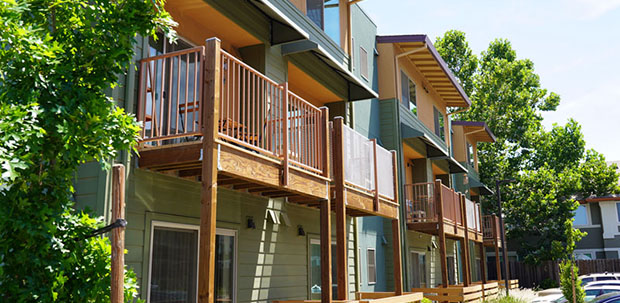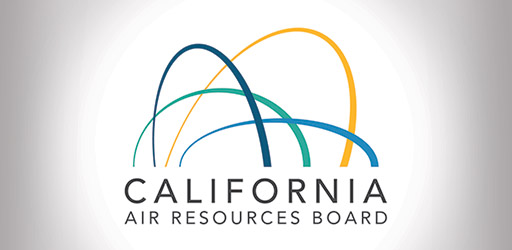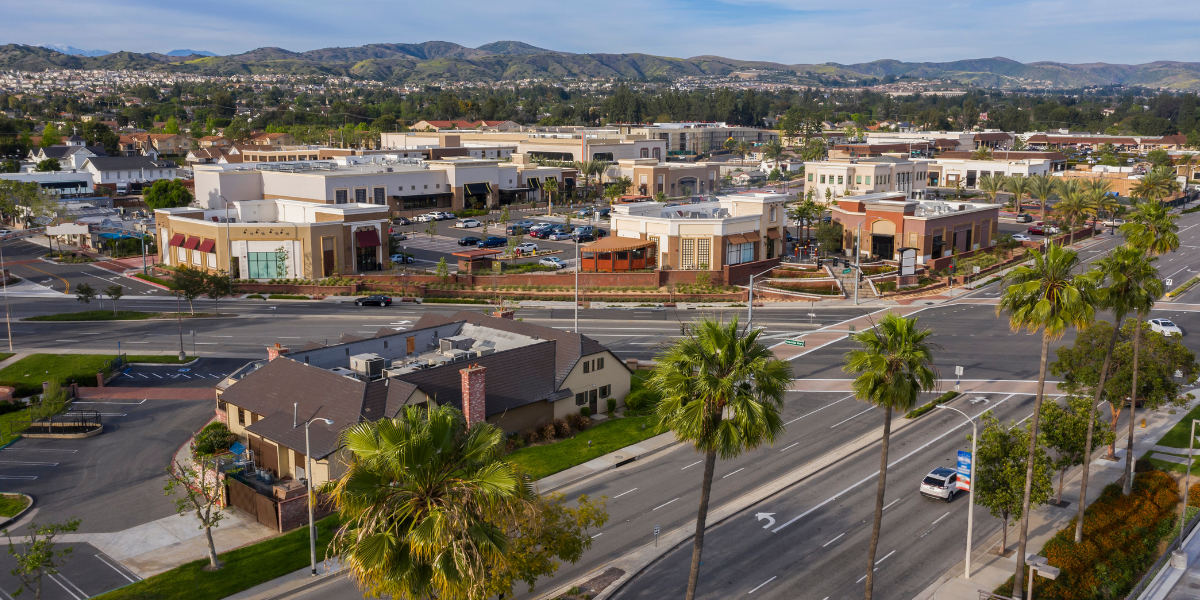CEQA Transportation Impacts (SB 743)
SB 743 (Steinberg, 2013) updates the way transportation impacts are measured in California for new development projects, making sure they are built in a way that allows Californians more options to drive less. This change will help us achieve our climate commitments, preserve our environment, improve our health and safety--particularly for our most vulnerable residents--and boost our economy by prioritizing co-located jobs, services, and housing. It will also reduce the time we need to spend in our cars to get places and provide more choices for how we travel, which will help to promote business, provide access to opportunity, and improve the quality of life across our state.
SB 743 Frequently Asked Questions
LCI remains committed to helping agencies and the development community implement SB 743. Through over 250 stakeholder convenings and seven years of collaboration with cities, counties, and metropolitan planning organizations across the state, LCI and other state agencies produced and collected the following advisory documents, tools, instructional videos, and background materials.
Key Resources on SB 743: Studies, Reports, Briefs, and Tools
This resource page will be updated as new resources become available. Last updated: June 22, 2020
- Article, Institute of Transportation Engineers Journal: Biases inherent in the LOS metric (ITE Journal, Aug 2014, 5p): Decision, Values, and Data: Understanding Bias in Transportation Performance Measures
- Article, Institute of Transportation Engineers Journal: LOS-based transportation impact studies inhibit sustainable transportation (ITE Journal May 2014, 5p) Changing the Paradigm of Traffic Impact Studies: How Typical Traffic Studies Inhibit Sustainable Transportation
- Primer: The difference between accessibility and mobility (Susan Handy, Access Journal, 5p): Highway Blues: Nothing a Little Accessibility Can’t Cure
- Study: Pursuit of high LOS grades worsens transportation and lessens economic activity in Southern California (UCLA Lewis Center and UCLA Institute of Transportation Studies, 12p Executive Summary, 80p academic study): Congested Development: A Study of Traffic Delays, Access, and Economic Activity in Metropolitan
Los Angeles - Study: Pursuit of high LOS grades worsens transportation and lessens economic activity in Northern California (UCLA Lewis Center and UCLA Institute of Transportation Studies, 10p Executive Summary, 99p academic study) Not So Fast: A Study of Traffic Delays, Access, and Economic Activity in the San Francisco Bay Area
- Report: Problems with reliance on LOS, discussion of updated metrics (American Planning Association, 12p): Smart Transportation Metrics for Smart Growth
- Report: Problems with reliance on metrics of auto mobility and delay (Joe Cortright, Impresa and CEOs for Cities)
- Executive summary (17p): A Critique of Mobility Measures and a Synthesis: How sprawl is lengthening our commutes and why misleading mobility measures are making things worse
- Full Report (71p): Measuring Urban Transportation Performance: A critique of mobility measures and a synthesis
- Report: Potential to reduce petroleum reliance through updating LOS metric (Summary 1p, report 9p): Unraveling Petroleum: Use of Performance Measures that Prioritize Automobiles over Other Modes in Congested Areas
- Literature review: VMT effect on environment, human health, and finances (NCST White Paper, 21p): Cutting Greenhouse Gas Emissions Is Only the Beginning: A Literature Review of the Co-Benefits of Reducing Vehicle Miles Traveled
- Report: Quantification and monetization of health benefits of reducing VMT and increasing active transportation and transit use (California Department of Public Health, 1p Executive Summary, 1p Technical Abstract, 20p study): Increasing Walking, Cycling, and Transit: Improving Californians’ Health, Saving Costs, and Reducing Greenhouse Gases
- Report: VMT reduction for better fiscal and financial outcomes (Short Summary, 4p; Executive Summary 10p, Report 79p): Growing Wealthier: Smart Growth, Climate Change, and Prosperity
- Report: Benefits of physical activity and the role of the built environment and air pollution (California Air Resources Board, 63p): Physical Activity: Health Benefits, the Role of the Built Environment and Impacts of Air Pollution
- Report: Cataloging pavement maintenance backlog in California (Ron Milam, Fehr and Peers, 3p): Protecting Our Transportation Investment
- Study: Reduction in cardiovascular disease, cancer, and general mortality associated with commuting by active transit (British Medical Journal, 7p): Association between active commuting and incident cardiovascular disease, cancer, and mortality: prospective cohort study
- Manual: Implementing research on VMT and GHG reduction from various strategies (research and methods underlying the CalEEMod tool - California Air Pollution Control Officers’ Association (CAPCOA), see pp 155-331): Quantifying Greenhouse Gas Mitigation Measures (A Resource for Local Government to Assess Emission Reductions from Greenhouse Gas Mitigation Measures)
- Report: Review of research on the relationship between urban development, VMT, and transportation CO2; evidence of the need for VMT reduction; efficacy of compact development for achieving GHG reductions. (Executive Summary 11p, Report 135p) Growing Cooler: The Evidence on Urban Development and Climate Change
- Report: Quantification of transportation strategies for VMT and GHG reduction (Urban Land Institute and Cambridge Systematics, 160 p): Moving Cooler: An Analysis of Transportation strategies for reducing greenhouse gas emissions (Executive Summary, 9p)
- California Air Resources Board Briefs on GHG (and VMT) reductions from Carsharing, Parking Pricing, Road User Pricing, Employer-Based Trip Reduction Programs and Vanpools, Pedestrian Strategies, Bicycling Strategies, Transit Service Strategies, Telecommuting, Voluntary Travel Behavior Change Programs.
- Tool: Induced Travel Calculator (National Center for Sustainable Transportation) Increasing Highway Capacity Unlikely to Relieve Traffic Congestion
- Academic Study: Assessment of past induced travel analyses in California (Volker et al., Transportation Research Record, Transportation Research Board, National Academy of Sciences, 12p): Induced Vehicle Travel in the Environmental Review Process
- Research Brief: Effects on VMT of adding roadway capacity (Caltrans/National Center for Sustainable Transportation, 2p): Increasing Highway Capacity Unlikely to Relieve Traffic Congestion
- Research Brief: Effects on VMT of adding roadway capacity (CA Air Resources Board, 10p): Impact of Highway Capacity and Induced Travel on Passenger Vehicle Use and Greenhouse Gas Emissions Policy Brief
- Research Brief Technical Background Document: Effects on VMT of adding roadway capacity (CA Air Resources Board, 10p): Impact of Highway Capacity and Induced Travel on Passenger Vehicle Use and Greenhouse Gas Emissions Technical Background Document
- Academic Article: History of the failure of transportation profession to account for induced VMT (The Planning Review, 8p) : “You Can’t Build Your Way Out of Congestion.” - Or Can you?
- Study: Recent major study on induced travel in the United States (American Economic Review, October 2011): The Fundamental Law of Road Congestion: Evidence from US Cities
- Article, Transportation Research Record: Background on improving methods for assessment of the VMT effects of roadway capacity projects (Milam et al., Transportation Research Record, Transportation Research Board, National Academy of Sciences, 6p): Closing the Induced Vehicle Travel Gap Between Research and Practice
- Article: Adding highway capacity is not a GHG reduction strategy (City Observatory, Joe Cortright, 6p) Urban myth busting: Congestion, idling, and carbon emissions
- Study: Recent major study on induced travel in the United States (Transport Policy, 2019): If you build it, they will drive: Measuring induced demand for vehicle travel in urban areas
- Brief: Potential effects of automated vehicles on VMT and GHGs, and policies to address them (UC Davis Institute of Transportation Studies, 4p): Keeping Vehicle Use and Greenhouse Gas Emissions in Check in a Driverless Vehicle World
- Brief: Suggested land use and transportation policies to address the advent of driverless vehicles (UC Davis Institute of Transportation Studies, 7p): Land Use and Transportation Policies
- Briefs: Additional policy briefs on automated vehicles and climate, active transportation, transit, equity, and governance.
- VMT Modeling Tool: CalEEMod
- Model website and download: California Emissions Estimator Model (CalEEMod)
- LCI recommendations for using CalEEMod for VMT assessment (Revised Proposal on Updates to the CEQA Guidelines on Evaluating Transportation Impacts in CEQA, case study pp. 47-52)
- California Statewide Travel Demand Model VMT and trip length data: Caltrans SB 743 VMT Impact Assessment webpage
- Report: Data sources for VMT (Federal Highway Administration pp. 54-92): Handbook for Estimating Transportation Greenhouse Gases for Integration into the Planning Process
- Accessibility Assessment Tool: Maps existing accessibility. US EPA Smart Location Database
- White Paper: VMT reduction, affordable housing, and transit-oriented development (Policy Brief 2p; Report 20p): Affordable Housing in Transit-Oriented Developments: Impacts on Driving and Policy Approaches
- Tool: Index of combined affordability of transportation and housing (Center for Neighborhood Technology): Housing and Transportation Affordability Index
- Report: Strategies for maintaining open space, helping towns thrive, and creating great new places in rural areas (32p): Putting Smart Growth to Work in Rural Communities
- Transportation Research Record Article: VMT reduction in rural areas (Miller et. al., 9p): Mitigating Vehicle-Miles Traveled in Rural Development
- Article: Roadway congestion can be solved through pricing mechanisms (Access Magazine, Spring 2017, 4p): Traffic Congestion Is Counter-Intuitive, and Fixable
- Article: Equity of peak period road pricing (City Observatory, Joe Cortright, 4p): Transportation equity: Why peak period road pricing is fair
- Academic Study: Assessment of roadway pricing v. sales tax funding (Transportation November 2008, Volume 35, Issue 6): Just pricing: the distributional effects of congestion pricing and sales taxes (infographic)
- Literature Review: Roadway pricing and equity (RAND, summary 4p, study 39p): Equity and Congestion Pricing A Review of the Evidence
- Literature Review and Guidance: Systematic consideration of roadway safety (Governor’s Office of Planning and Research, 14p): General Plan Guidelines, Appendix B, SB 743 Safety Technical Advisory
- Academic Study: The need to reduce VMT in order to reduce traffic fatalities (Accident Analysis and Prevention, 9p) Automobile-Dependency as a Barrier to Vision Zero, Evidence from the State in the USA
Archives
Released April 2018
Released November 2017
Released January 2016
Second draft of CEQA Guidelines implementing SB 743, and the Technical Advisory
Released December 2013
Discussion of metrics options for implementing SB 743








